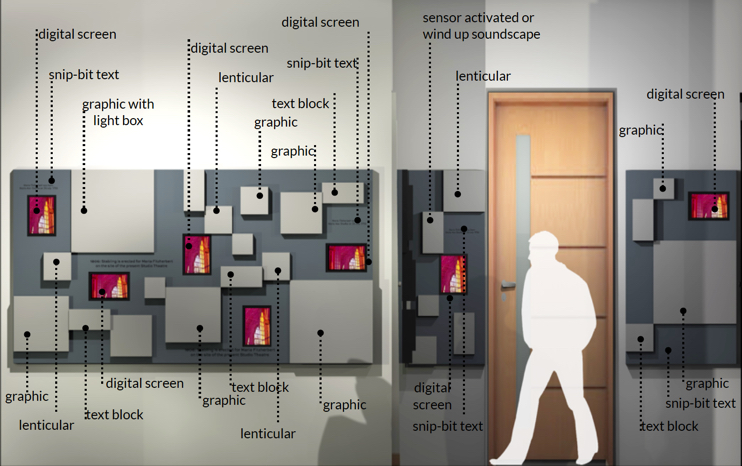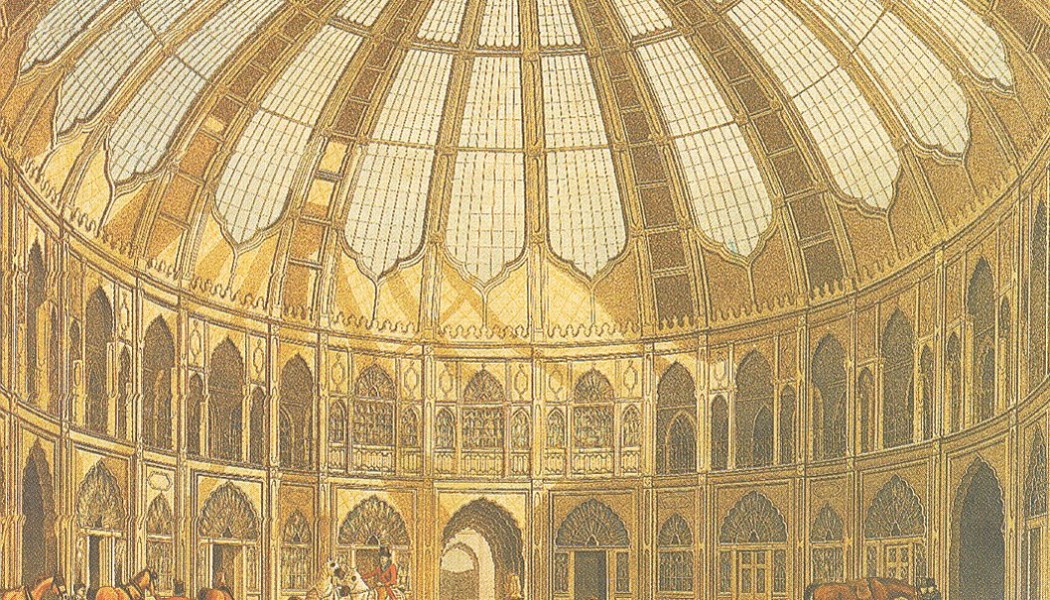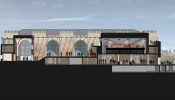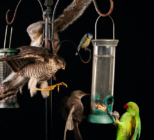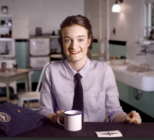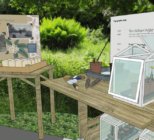The Royal Pavilion Estate encompasses the Royal Pavilion, Brighton Museum & Art Gallery, Royal Pavilion Garden and all the Brighton Dome venues; Concert Hall, Corn Exchange and Studio Theatre.
Last year they appointed heritage development and design specialists, Tricolor to complete the interpretation of the first phase.
What was your brief on the project and how did you make it happen?
Tricolor was appointed in June 2015 to undertake the estate-wide Interpretation Strategy for the entire Royal Pavilion Estate (RPE), as well as the Interpretation Plan and designs to RIBA 3, as part of Phase One of the project which includes a major refurbishment of Brighton Dome Corn Exchange and Studio Theatre.
Tricolor engaged over 1,000 people and community groups in the consultation process by running stakeholder engagement sessions for staff and volunteers, using an integrated social media testing strategy, and working alongside key partners and community groups. We were targeted to reach groups representing young people, older people, people with disabilities and people from BAME and LBGT communities. The results of this were used to provide an informed estate-wide interpretation strategy that was flexible, had an innovative thematic framework and made the stories of the Estate compelling and relevant for modern Brighton audiences.
What were the challenges and complexities you faced and how did you overcome them?
The very short 10-week, timescale was the biggest challenge for this complex project, which we managed via our rigorous project planning process and ability to upscale the team (we have more than 25 consultants and designers) as required to ensure the project stayed on track.
What are the benefits of interpretation for heritage buildings such as those managed by the Royal Pavilion Estate?
We don’t consider ourselves exhibition designers, although exhibition design is one of our services. We see ourselves are interpretation designers so have the protection of heritage uppermost in our minds and know that through innovative and engaging channels, more people can participate in heritage and increase their understanding of it, subsequently, increasing enjoyment and generating a greater respect for heritage itself. The majority of our team come from museum and archaeology backgrounds so the balance between conservation and innovation is paramount.
What techniques and expertise were used improve the overall exhibition experience with the over the different sites?
For interpretation, we take a Universal Design approach which has maximising access for all types of people at its core. We identify barriers to access – intellectual, sensory, physical, cultural, financial and organisational – through consultation both internally and externally and strive to find interpretation solutions to mitigate them. We work closely with other consultants and our own in-house Activity Planning and Business Planning teams to help develop solutions to address barriers and maximise the learning outcomes for all audiences.
Community engagement and involvement in interpretation is vital as this ensures that the audiences – the end users – actually have a say in the final experience. Equally, the client team must be involved at each stage as they have to manage and deliver the visitor experience so have a valuable insight into the viability of proposals. This co-production approach is central to Tricolor’s approach to developing interpretation.
What are the main elements you consider when preparing large-scale museum projects?
Visitor experience, learning outcomes, accessibility, narrative impact.
What consideration/plans were made for this project in terms of visitor/stakeholder input and what decisions were based on this?
Everything we do is driven by audiences and the ongoing evolution of the visitor experience as tastes and culture change and adapt. We developed a full workshop and testing programme for the new visual language and interpretation design outputs.
Tricolor has an integrated, audience-led consultation approach using a mixture of different channels appropriate to audience needs. As members of The Consultation Institute, we specialise in offering alternative format options for consultations such as Braille, Easy Read Photosymbols, as well as audio and visual, where requested.
This is on top of our standard channels for testing interpretation which included targeted audience workshops where we test DRAFT versions of our interpretation proposals, including access workshops for people with barriers to access as well as workshops aimed at children.
How important is interpretation to the design of both new and existing exhibitions?
Great interpretation is about telling an impactful story, enhancing people’s learning on a subject and contributing to a memorable experience. The advantages of getting it right are highly engaged visitors, who stay on-site longer (possibly buying items in the shop or café thereby increasing discretionary spend) as well as becoming ambassadors in the community for your museum or heritage site.
In terms of new technology, how was this incorporated into the interpretation at Royal Pavilion Estate and Brighton Dome & Brighton Festival and what benefits has this had on the museums?
We are very excited about delivering an integrated and layered approach to the interpretation within the Corn Exchange and Studio Theatre at Brighton Dome & Brighton Festival, which is the first phase of the project to roll out. We’re using a mix of immersive Audio Visual channels, with interactive technology and lenticular imaging to create depth and ‘wow’ factor to the visitor experience.



